| Srl | Item |
| 1 |
ID:
119045
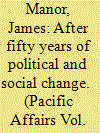

|
|
|
| 2 |
ID:
119048
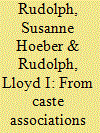

|
|
|
| 3 |
ID:
119041
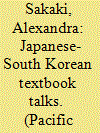

|
|
|
|
|
| Publication |
2012.
|
| Summary/Abstract |
One of the most notorious issues haunting Japanese-South Korean relations is the controversy over textbook depictions of Japan's colonial rule and war atrocities in the early twentieth century. In recent years, a number of bilateral projects have been launched on both the non-governmental and governmental level, seeking to narrow divergences in historical perceptions. Focusing on the Japanese side, this article assesses the impact of recent non-governmental textbook projects, arguing that these projects-while important and encouraging-have a limited capacity to prompt changes in educational policies. Textbook talks officially endorsed by the government and supported by a critical mass of politicians remain indispensable to promote a transnational reconstruction of the past. Based on a comparison between Japanese-South Korean and German-Polish government-backed talks, the paper identifies how decision makers can help foster an atmosphere conducive to the work of bilateral textbook commissions. It concludes that a key requirement for successful talks is that politicians, utilizing a variety of measures, pursue the dual goal of demonstrating high-level commitment to the talks and shielding the work proactively from nationalistic pressures. In contrast to their German counterparts, Japanese political elites have so far failed to pursue such an environment, casting doubts about progress in the textbook dispute for the foreseeable future.
|
|
|
|
|
|
|
|
|
|
|
|
|
|
|
|
| 4 |
ID:
119046
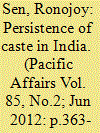

|
|
|
| 5 |
ID:
119044
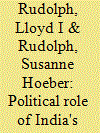

|
|
|
| 6 |
ID:
119042
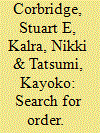

|
|
|
|
|
| Publication |
2012.
|
| Summary/Abstract |
One distinguishing feature of mainstream social science is its growing regard for model building and formal hypothesis testing. In South Asian studies this is most evident in accounts of ethnic riots or communal violence. This paper examines a model of votes and violence proposed by Steven Wilkinson. We first examine how well the model performs against a data set that we have assembled on the twenty worst incidents of communal violence in India since 1950. The Wilkinson model is consistent with some important key facts in our data set, most notably in terms of levels of urbanization and "percentage Muslims" in riot-affected towns and cities. However, proximity to national or state elections is not found to be a strong driver of prolonged ethnic rioting. Nor is it the case that India's worst instances of communal violence occurred mainly where there was direct electoral competition between less than 3.5 effective political parties, the other main predictive variable in the Wilkinson model. We then discuss the limitations more broadly of attempts to explain and even predict ethnic violence within the framework of a quantitative model. We pay attention to time inconsistencies, principal-agent problems, religiosity and the homogenization of riot events, and omitted variables (notably, memory work and ideological fervour). We conclude with some general remarks on the search for order in social science.
|
|
|
|
|
|
|
|
|
|
|
|
|
|
|
|
| 7 |
ID:
119043


|
|
|
|
|
| Publication |
2012.
|
| Summary/Abstract |
How are social movements of the underdogs sustained and how are constraints of these movements overcome, in particular, constraints imposed by non-liberal democratic states? Utilizing the Damansara Save Our School movement in Malaysia as its case study, this article describes factors that led to the successful resistance of the Damansara New Village community against the closure of its community school, the Damansara Chinese Primary School. Although inexperienced in social movement activities, small in size, financially and socially disadvantaged, the villagers of Damansara New Village successfully sustained their resistance for seven years and eventually procured compromises from the Malaysian authorities, which reopened the school premises in January 2009. Lacking access to democratic institutions in the country, the Damansara Save Our School movement relied on unconventional-yet highly institutionalized-resistance methods to mobilize support and engage in political contention. This article analyzes three components that had led to the movement's successful endurance: institutionalization of the Save Our School Committee as the main mobilization machinery; formation of a temple school that sustained the functioning of the school, physically and symbolically; and dynamic adaptation of movement repertoires to overcome constraints imposed by the stronger and not so liberal state. For the movement community and supporters alike, the reopening of the school premises in 2009 attests to the miracle of everyday resistance by underdogs in surmounting unjust policies imposed by a powerful state.
|
|
|
|
|
|
|
|
|
|
|
|
|
|
|
|